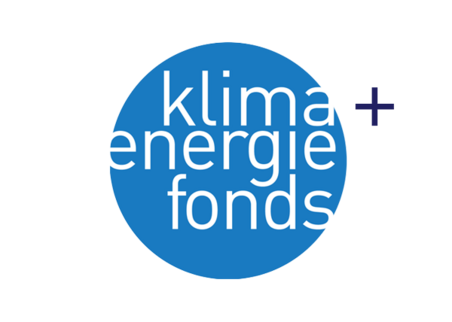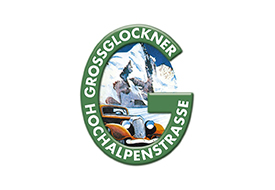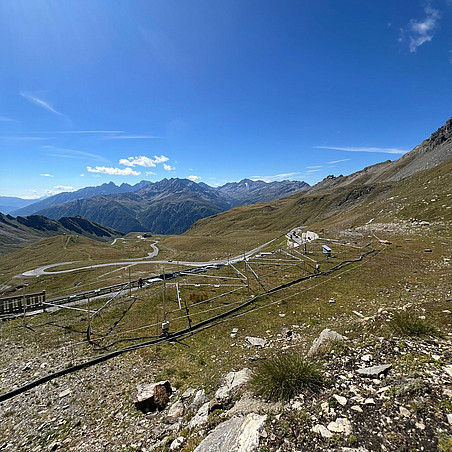Biopatinas on buildings in urban environments: biofilters, CO2 sinks and cooling systems with an aesthetic-architectural effect (2025-2028)
Project Collaborators
Asma Fathinejadposhkoohi
Dr. Minsu Kim
Univ.-Prof. Dr. Bettina Weber
In recent years, growing social awareness on the adverse effects of climate change and high pollution levels, has raised the need to adopt sustainable practices and promote greener, healthier environments, particularly in the inner cities.
In this project, we propose to utilize (rather than remove) the biopatinas naturally occurring on urban architectural surfaces, as a low-maintenance method of urban greening. The main hypothesis is that biopatinas can absorb atmospheric pollutants and act as valuable carbon sinks, can be natural biofilters and bioremediation systems, trapping particulate matter and dust, but could also have cooling effects on the buildings microclimate. Therefore, the main objective of this project is to investigate these aspects of biopatinas in urban areas, to fully explore their potential to contribute to a better environment. To achieve this, a highly interdisciplinary endeavour is required, hence our project brings together geomicrobiology, material ecology, environmental physics and art-based methods. Through a quantitative scientific methodology (gas and dust exchange measurements, molecular biology, physico-chemical techniques), data from biopatinas of representative surfaces in Vienna will be obtained and be at the base to upscale local measurements to a larger scale, developing predictive modelling.
The scientific approach will be supported by the use of participatory art-based practices to achieve greater public awareness and acceptance of biopatina on monuments and in architecture in the city.
CC biocrust: Effects of climate change on biological soil crusts and their ecosystem services in alpine regions (2024-2027)
Project Collaborators
MSc Janne Creve
Univ.-Prof. Dr. Bettina Weber
In CCbiocrust, we plan to investigate the effects of climate change (CC) on biological soil crusts (biocrusts) and the ecosystem services provided by them. In a first project part, we will establish a CC experiment in the high alpine region of the Großglockner to investigate the effects of increased temperatures and reduced snow cover on biocrusts in a full factorial approach. As it is not clear how quickly CC effects will be measurable under field conditions, we will conduct a second project part, where CC experiments will be conducted in an innovative climate chamber approach in the laboratory.
This dual project approach secures first results already at an early stage of the project, but also reliable long-term results obtained under natural field conditions. In both experimental approaches, a complex set of biocrust parameters and their functional properties will be investigated, comprising biocrust coverage and biodiversity, including microbial and protist diversity, as well as key functional properties, which include photosynthetic carbon sequestration, effects on soil stability, and nutrient provisioning.
With this project, substantial knowledge regarding the effects of CC on biocrusts and their ecosystem services will be generated. The information will help stakeholders, like land managers and nature conservationists, to understand the role and potential endangerment of biocrusts, and to adapt to the changes expected for the near future to secure functioning of the high alpine environment. The project is actively supported by the Großglockner High Alpine Road AG.
CryptXchange: Biosphere-atmosphere interactions of cryptogamic communities at the Amazon Tall Tower Observatory (ATTO) and their relevance across spatial scales (2023-2026)
Project Collaborators
PhD Lina Avila Clasen
Dipl.-Ing. BSc Philipp Faulhammer
Univ.-Prof. Dr. Bettina Weber
The Amazon basin of South America is home to the largest contiguous forest area on Earth, which stores almost half of the carbon in the Earth's vegetation. In addition, the Amazon rainforest plays a key role in maintaining global biodiversity and the climate.
In the Amazon rainforest, large areas of trees and shrubs are overgrown with fungi, lichens, algae and mosses. All these organisms belong to the group of cryptogams, which do not form flowers but reproduce in secret. Cryptogams usually grow in communities that can be very closely intertwined. A rough initial estimate showed that around a third of the trunks, branches and leaves in the Amazon rainforest are covered in cryptogams. This corresponds to a surface area of around 50 million square kilometers, which is more than five times the size of the USA. Despite these high levels of cover, cryptogamic communities are rarely the focus of studies in the rainforest. The few studies that have been carried out are primarily concerned with recording species diversity and their relationships. Their functional significance in exchange processes with the atmosphere, on the other hand, has hardly been considered to date.
The Amazon Tall Tower Observatory (ATTO) offers an ideal scientific platform to study cryptogamic-related biosphere-atmosphere exchange processes and their influence on atmospheric chemistry, aerosols (i.e., solid or liquid particles in the atmosphere), clouds and forest diversity. The research infrastructure is located 150 kilometres north-east of Manaus in a relatively pristine part of the Amazon rainforest. The infrastructure includes a 325 meter and two 80-meter-high research towers to record the concentration of a variety of trace gases as well as the microclimatic conditions in detail over long periods of time.
The project focuses on five research questions: How extensive are the coverage and diversity of the most important cryptogamic groups (lichens, mosses, fungi, algae)? What is the water storage capacity of mosses and the fluctuation of this storage in relation to microclimatic conditions such as temperature and light intensity? How much organic carbon is stored by mosses and over what period of time? How and to what extent are biological aerosol particles released by cryptogams? How is the release and uptake of gaseous organic components by cryptogams controlled and to what extent does it occur?
This combined analysis of different ecosystem functions of cryptogams will substantially contribute to a categorization of the functional significance of these communities.
Soil MCG: In situ Tracking of Soil Invisibles: A case Study of Soil Nitrogen Cycling via Simultaneous Monitoring of Soil Microbes, Soil Chemicals, and Soil Gases (2024-2026)
Project Collaborators
Dr.rer.nat. Bakk.rer.nat. MSc. Stefanie Maier
Dr. Minsu Kim
Univ.-Prof. Dr. Bettina Weber
Soils are one of the Earth´s significant natural resources, serving as carbon and water storage/filters, which form the basis of our food. Therefore, it is important to protect soils, ensuring the relevant ecosystem functions and services they provide. Soils play a pivotal role in the biogeochemical cycles of water, carbon, nitrogen, and all other elements essential for life. Among the essential elements, most organisms require reactive forms of nitrogen (N), such as ammonium (NH4+) and nitrate (NO3-) for growth. The availability of these nutrients relies on microbial N-transformation, including two key biochemical processes - nitrification and denitrification. When soils become N-limited, fertilization may be the most important factor to consider in soil management. Increasing the amount of N in the soil promotes plant growth, but there are also unfavourable environmental side-effects, like the leaching of N compounds into aquifers and the release of gaseous N to the atmosphere. Appropriate application of fertilizers could help to minimize these deleterious emissions, but such an optimization depends greatly on a mechanistic understanding of soil N processes.
In the proposed project, we aim to develop an interdisciplinary measurement setup for soil not only in the laboratory but also under field conditions to measure concentration of inorganic N in solutions, fluxes of CO2 and N gases, and microbial activities via genetic compounds, here namely soil invisibles. To track these soil invisibles in situ, we aim to combine the strength of the open flow microperfusion (OFM) technology for continuous sampling of microbial metabolites with online monitoring of soil gas emissions using the dynamic chamber method with the support by a mechanistic model to study microbial processes related to the biogeochemical cycling of carbon and nitrogen. With this newly developed measurement setup, we aim to address gaps in our knowledge to tackle global environmental challenges, such as food security and greenhouse gas regulation and soil pollution.
Soil emission of nitrous acid (HONO): underlying mechanisms and impact on megacities and surrounding environments (2023-2025)
Project Collaborators
Dr. Minsu Kim
Dr.rer.nat. Bakk.rer.nat. MSc. Stefanie Maier
Univ.-Prof. Dr. Bettina Weber
Air pollution is a major environmental problem the world is facing, contributing to nearly 8% of all deaths worldwide. Gaseous nitrous acid (HONO) has a large impact on atmospheric chemistry and air quality, as photolysis of HONO plays a key role in the formation of hydroxyl radicals (OH), and OH radicals control the atmospheric oxidation capacity and regulate the production of secondary pollutants. Soil is an important HONO source demonstrated by soil HONO exchange experiments in laboratories and short-term HONO flux measurement in the field. However, detailed mechanisms regarding HONO emissions from soil and long-term HONO emission characteristics of soils are still unclear, which makes predictions and simulations of soil HONO emissions remain difficult.
In this project, we will carry out both short-term (to achieve large spatial coverage) and long-term measurements of HONO fluxes of different types of soil in urban/rural areas of Shanghai, a typical megacity in China, by using an in-situ high-time-resolution soil flux measurement system. Along with measurements of soil properties, we will explore the key mechanisms and parameters that control HONO emissions from soils. Using the newly identified soil emission mechanisms, we will test and further improve our previously developed process-based models relevant for HONO emissions (i.e., DBM and BOYAN). Moreover, the impact of intensive development of land in megacities, intensive farming, and their interactions on air quality will be quantified. These results will provide scientific evidence for policy recommendations for the proper management of soils and air quality.
Overall, this work will provide a comprehensive understanding of biosphere-atmosphere interactions and the role of human perturbations in the Earth’s biogeochemical cycles.








